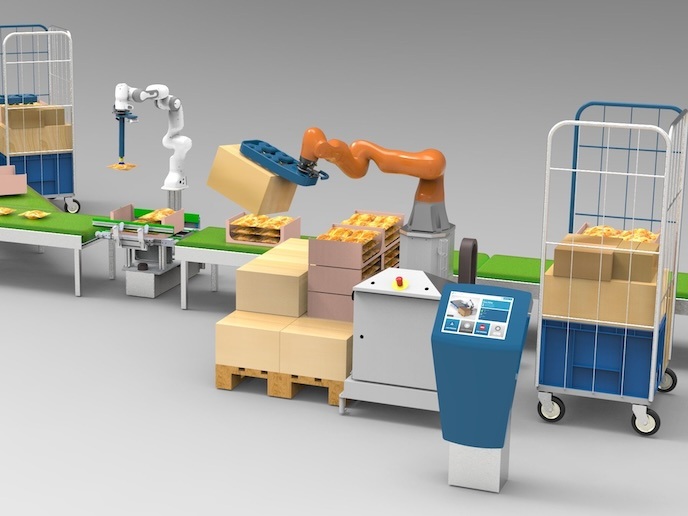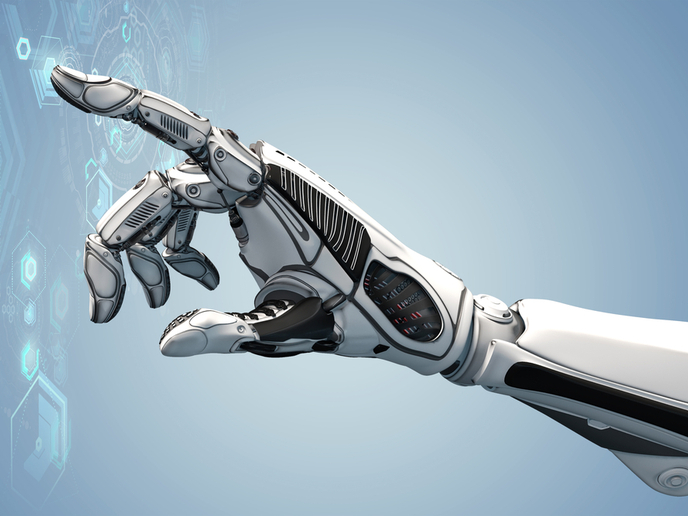Motion-intelligent robots are one step closer
Impact-aware robots are one of the key goals in the ever-evolving field of robotics. Currently, robots halt before an impact, such as the action of picking something up. Each pause, however brief, acts as a break on the flow of movement, taking time and rendering processes less efficient. So, the quest is on to find a way robots can smoothly and continually interact with contact tasks, while not damaging objects or hurting people in the vicinity. Since these robots would be used in sectors such as aerospace, building, retail and aviation, this needs to apply to contact with small objects and large, heavy ones. The I.AM project is moving towards a solution. “We have developed a system that can speed up such tasks by 5–10 % and if you consider that across multiple robots, repeating tasks constantly in a large logistics centre, for example, the saving makes the process considerably more efficient,” says Alessandro Saccon, coordinator of the I.AM project. The EU-supported project, hosted by Eindhoven University of Technology, in the Netherlands, considered the software controlling the robot.
The challenge of creating motion intelligent robotics
“We asked: what kind of motion intelligence is needed to perform contact at non-zero speed? Can you predict what would happen in such a context? Sometimes the robots are moving really fast, so how can you make them safe and accurate?” This is more complex that you may think. The robots have to be able to ‘figure out’ what to do in the case of an unexpected outcome, such as what happens when the contact fails, and what the next action needs to be. “Because things are moving faster, mistakes are more likely to happen, so the robot needs to anticipate and react, and that’s not easy to construct,” Saccon explains. “If I kick a ball, what will happen to the ball? How should I snatch an object from a table, and what will happen if I miss?” The solution needs a wide scope: “Of course everything has to be implemented in software, but the challenge is to develop the logic, the intelligence to perform these tasks. You need the proper hardware, the software, and the impact-aware motion intelligence,” he adds.
Multiple iterations of real-time measurements make algorithms more robust
The project used first principles calculations, considering such things as mass and friction, and software simulations to see where the gaps were between mathematical models and events. While the simulation will never correspond completely to the behaviour of the robots, by taking realtime measurements of robots impacting different type of objects in different type of scenarios, the team was able to refine their algorithms. Saccon explains: “It’s a cycle in which you apply a theoretical robot control algorithm within a simulation, you check the outcome in the simulation and compare that with the results of the application in reality.” Then the work starts with an iterative process to fine-tune the control algorithm. “We need to understand the limits of the simulation, because essentially that will become your mental model,” adds Saccon.
Open-source resources for robotics design
The project’s breakthroughs in modelling, sensing, learning and control of fast impacts are accessible online through four sections: 'I.Model' offers accurate impact models that predict post-impact robot states based on pre-impact conditions; 'I.Learn' uses models of uncertainties to generate control parameters; 'I.Sense' developed impact-aware sensing technology and 'I.Control' brings together models, planning and sensing components for efficient manipulation tasks accessible online. “Creating robots that exploit impacts for manipulation is challenging, but we've shown it can be done," Saccon says.
Keywords
I.AM, robotics, motion-intelligent robots, impact-aware robots, robotics design, robot control







